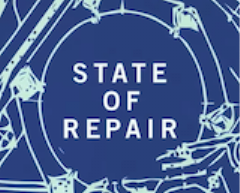Image: Getty Images
State of Repair is Motherboard's exploration of DIY culture, device repair, ownership, and the forces fighting to lock down access to the things you own.
Advertisement
This is similar to a design choice Apple made with earlier versions of the iPhone, where TouchID was paired to the actual device. Apple used something called a “Horizon Machine” to pair new TouchID home buttons with broken devices, but independent repair companies couldn’t do this. The difference here is that TouchID broke only very rarely (or if the repair person made a mistake and severed a specific wire while doing another repair), whereas phone screens crack all the time.
Advertisement
Advertisement
“This is earth-shattering for the repair industry: the iPhone 13's screen is locked to the phone,” Wiens said on Twitter. “Apple technicians have a secret software tool to install new screens. This will destroy local repair shops.”Other repair shop owners agree. “[This] is an intentional move to thwart a customer’s ability to repair,” Justin Drake Carroll, the CEO of the Fruit Fixed repair chain in Virginia told iFixit. “Honestly, if every screen repair involved that much work, I would hang it up and we wouldn’t be able to help the thousands of people we do each month.”According to Carroll, screen replacements are about 35 percent of his business. “At one point it was 60 percent, a few years ago. We worked really hard to push that figure down, so that one revenue stream wasn’t such a huge part of what we do. Obviously, it’s still an incredibly important part of our business model.Apple is dedicated to stopping people from getting their devices repaired by anyone who isn’t Apple. It once pushed out an iOS update that warned users who’d replace the camera on their iPhone 12 that they weren’t using a genuine Apple part. Leaked videos revealed how Apple trains its repair partners to discourage customers from getting cheaper repairs outside of its network.This design change makes right-to-repair laws—which would prevent artificial, anti-repair software locks and would require companies to provide software and tools that their own techs use to the public—more urgent than ever. Wiens told Motherboard several years ago, near the beginning of the right-to-repair fight, that the movement was racing against time to pass a law before Apple implemented an anti-repair design decision like this. The thinking at the time was that, because so many repair shops rely on screen replacements as their main revenue source, a change like this would potentially put many of them out of business and would further normalize manufacturer-driven repair monopolies. The right-to-repair is more popular than ever. The FTC has adopted a right-to-repair platform, the Department of Commerce said we need fewer repair restrictions, and President Biden signed a sweeping executive order aimed at making it easier for people to fix their own stuff. Companies like Apple and John Deere don’t want people to fix their own stuff, they want to operate repair monopolies that make it expensive and difficult for people to fix their devices when they break. The iPhone 13 issue is just Apple’s latest attack in its long war with the right-to-repair."Society needs more competition, not less,” Wiens said. “It's clear that Apple is going to continue to abuse their monopoly power until our legislators step up and pass right to repair laws.”Apple did not immediately respond to Motherboard’s request for comment.


